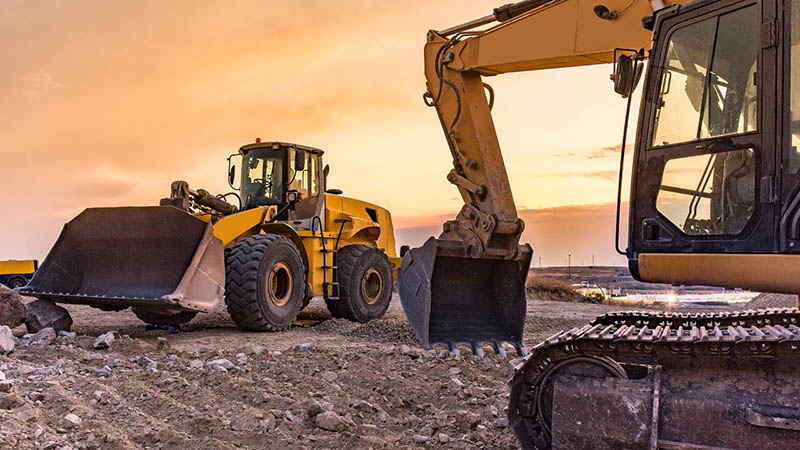Construction, Mining, and Agriculture Equipment Safety Operating Procedures in Zimbabwe: A Comprehensive Guide
Zimbabwe’s vibrant construction, mining, and agricultural sectors rely heavily on machinery. However, the safe operation of this equipment is crucial to minimizing workplace accidents and ensuring the well-being of operators and those working nearby. This comprehensive guide outlines key safety operating procedures specific to the Zimbabwean context, considering local regulations and common challenges.
General Safety Principles:
Before discussing equipment-specific procedures, it’s vital to establish fundamental safety principles that apply across all sectors:
Pre-shift Inspections: A thorough pre-shift inspection is mandatory for all equipment before operation. This includes checking fluid levels (oil, coolant, fuel), tire pressure (where applicable), brakes, lights, and any signs of damage or wear and tear. Any defects should be immediately reported to the supervisor and rectified before operation. A standardized checklist should be used and documented.
Personal Protective Equipment (PPE): Appropriate PPE must be worn at all times. This includes safety helmets, safety boots with steel toe caps, high-visibility clothing, safety glasses or goggles, hearing protection (especially in noisy environments), and gloves suitable for the task. Specific PPE requirements may vary depending on the equipment and task.
* **Training and Certification:** Operators should receive comprehensive training on the specific equipment they operate, including pre-start checks, safe operating procedures, emergency shutdown procedures, and basic maintenance. Certification should be obtained and regularly updated to ensure competency. The training should be conducted by qualified personnel and should be tailored to the specific hazards present in the Zimbabwean operating environment.
* **Risk Assessments:** Regular risk assessments are crucial. These should identify potential hazards associated with each piece of equipment and the specific work environment. Control measures, such as engineering controls (e.g., guarding), administrative controls (e.g., work permits), and personal protective equipment, should be implemented to mitigate identified risks.
* **Communication:** Clear and effective communication is essential. Operators should communicate with colleagues and supervisors, especially when working in close proximity to other equipment or personnel. The use of hand signals and radio communication can significantly improve safety.
* **Emergency Procedures:** All operators must be familiar with emergency procedures, including how to shut down equipment safely in case of an emergency, how to respond to spills or leaks, and how to provide first aid. Emergency response plans should be readily available and regularly practiced.
**II. Construction Equipment Safety:**
Construction equipment encompasses a wide range of machinery, including excavators, bulldozers, loaders, cranes, and concrete mixers. Specific safety procedures for each type of equipment are as follows:
* **Excavators and Bulldozers:** Ensure the area is clear of obstacles and personnel before operation. Operate at safe speeds, avoiding sharp turns or sudden movements. Use appropriate back-up alarms and spotters when necessary. Regularly check the stability of the ground.
* **Loaders:** Avoid overloading the bucket. Maintain a safe distance from the edge of excavations or embankments. Ensure the load is stable before transporting.
* **Cranes:** Follow load charts strictly. Regularly inspect all crane components for damage. Use appropriate signaling systems between crane operator and ground personnel. Ensure the crane is properly leveled and stabilized before operation.
* **Concrete Mixers:** Ensure all guards are in place and functioning correctly. Never reach into the mixer while it is in operation. Follow the manufacturer’s instructions for loading and unloading.
**III. Mining Equipment Safety:**
Mining equipment presents unique challenges due to the hazardous nature of mining operations. Safety procedures include:
* **Heavy Haulage Trucks:** These require rigorous pre-trip inspections, including brake systems, tires, and lights. Operators must be trained in safe driving techniques, particularly on uneven terrain. Strict adherence to speed limits is essential.
* **Excavating Equipment (in mines):** Similar to construction equipment, these need regular maintenance and thorough pre-shift inspections. However, mine-specific hazards such as ground instability and the presence of underground workings necessitate additional precautions.
* **Drilling and Blasting:** This is a highly hazardous activity requiring specialized training and strict adherence to safety protocols. Appropriate blasting licenses and permits are mandatory. Clear communication and strict control of the blasting area are paramount.
**IV. Agriculture Equipment Safety:**
Agricultural equipment, including tractors, harvesters, and sprayers, also poses significant safety risks:
* **Tractors:** Regular maintenance and pre-start checks are essential. Operators should be aware of the risks associated with PTO (power take-off) shafts and ensure all guards are in place. Safe operating procedures for attaching and detaching implements are crucial.
* **Harvesters:** Regular maintenance and inspection of cutting mechanisms are vital. Operators should be aware of potential entanglement hazards. Safe operating procedures for clearing blockages must be strictly followed.
* **Sprayers:** Appropriate PPE, including respirators and protective clothing, is essential when handling pesticides and herbicides. Operators must follow label instructions carefully and be aware of the environmental impact of chemical use.
**V. Compliance with Zimbabwean Regulations:**
All equipment operation must comply with relevant Zimbabwean regulations and standards. The Ministry of Labour and Social Welfare provides guidance and enforcement on occupational safety and health. Operators and employers are responsible for ensuring compliance with all applicable laws and regulations.
**VI. Ongoing Training and Improvement:**
Safety is an ongoing process. Regular training, refresher courses, and safety audits are essential to maintain a safe working environment. Continuous improvement initiatives should be implemented to identify and address potential hazards proactively.
This guide provides a general overview of safety operating procedures. Specific procedures may vary depending on the type of equipment, the work environment, and the specific tasks being performed. It is essential to refer to manufacturer’s instructions and relevant Zimbabwean regulations for detailed information. Prioritizing safety is not merely a legal requirement; it’s a moral obligation to protect the lives and well-being of all workers in Zimbabwe’s crucial construction, mining, and agricultural sectors.



